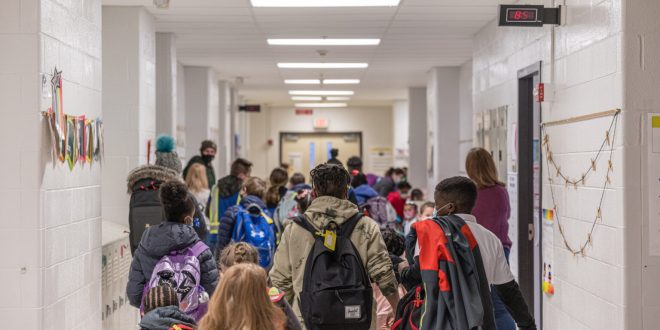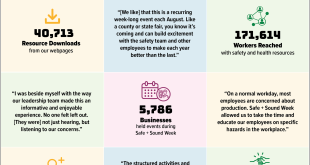The potential impact of Medicaid cuts on school health and wellness services is a growing concern for educators, healthcare providers, and families alike. These services, often a lifeline for vulnerable students, provide essential medical care, mental health support, and health education, contributing significantly to student well-being and academic success. Understanding the potential consequences of reduced funding is crucial for advocating for the health and well-being of our students. I mean, who wants to see kids suffer, right?
The Role of Medicaid in School Health Services
So, how exactly does Medicaid fit into the picture when we talk about schools? Well, it’s actually pretty vital. Medicaid helps to fund a whole range of health services that are delivered right there in the school setting. We’re talking about everything from basic medical care to mental health support – things that can make a huge difference in a kid’s life and their ability to learn.
Funding Mechanisms and Coverage
You see, Medicaid funding for schools isn’t always straightforward. It often involves a mix of federal and state dollars, and the specifics can vary quite a bit from one state to another. Generally, schools can get reimbursed for certain health-related services they provide to Medicaid-eligible students. Think things like screenings, vaccinations, and even counseling. It’s not always a huge amount of money, but it’s often enough to make a real difference. I sometimes wonder if the folks making these decisions even realize the impact on the ground level.
Specific Services Supported by Medicaid in Schools
Medicaid’s reach in schools is pretty broad. We’re talking about funding for things like school nurses, mental health counselors, and even telehealth services. These services can be especially important for kids who might not otherwise have access to healthcare. They can get check-ups, get help with mental health issues, and learn about how to stay healthy, all without having to leave school. It’s like having a mini-clinic right there on campus. Pretty cool, huh?
Importance of School-Based Health Services for Low-Income Students
For many low-income students, school-based health services are their primary, or even only, source of healthcare. Without these services, these students might go without necessary medical care, mental health support, and health education. This can have a major impact on their overall health and well-being, as well as their ability to succeed in school. You know, it’s hard to focus on algebra when you’re worried about where your next meal is coming from, or if you have a toothache that’s driving you crazy.
Potential Impacts of Medicaid Cuts
Okay, so what happens if Medicaid funding gets cut? This is where things get a bit scary. Less money means fewer services, which means less access to healthcare for students who need it most. We’re talking about a domino effect that could have serious consequences for their health and their education. It’s not a pretty picture, that’s for sure.
Reduced Access to Healthcare for Students
The most obvious impact of Medicaid cuts is that fewer students will have access to healthcare services at school. This could mean longer wait times for appointments, fewer available services, and even the elimination of certain programs altogether. For students who rely on these services, this could be a major setback. It’s like taking away a safety net when they need it most.
Staffing Reductions and Service Limitations
When funding gets cut, schools often have to make tough choices. One of the first things to go is often staffing. This could mean fewer school nurses, counselors, and other health professionals. With fewer staff, schools can’t provide as many services, and the services they do provide might be less comprehensive. It’s a vicious cycle, really.
Increased Burden on Schools and Families
If Medicaid funding is reduced, the burden of providing healthcare for students will likely shift to schools and families. Schools may have to find other ways to fund these services, which could mean cutting back on other programs. Families, especially those with limited resources, may struggle to afford the healthcare their children need. It’s a tough situation all around.
Long-Term Consequences for Student Health and Academic Outcomes
The long-term consequences of Medicaid cuts could be significant. Students who don’t have access to healthcare may experience more health problems, which can lead to absenteeism and lower academic achievement. They may also be more likely to develop chronic health conditions later in life. It’s like setting them up for failure before they even have a chance to succeed. Makes you wonder about our priorities, doesn’t it?
Addressing the Challenges and Protecting School Health Services
So, what can be done to address these challenges and protect school health services? Well, it’s going to take a multi-pronged approach. We need to advocate for policies that support school-based health services, explore creative funding strategies, and develop community-based solutions. It’s a big task, but it’s one that’s worth fighting for.
Advocacy and Policy Recommendations
One of the most important things we can do is to advocate for policies that support school-based health services. This could mean lobbying elected officials, organizing grassroots campaigns, and raising awareness about the importance of these services. We need to make sure that policymakers understand the impact of Medicaid cuts on students’ health and well-being. It’s time to make some noise, folks.
Creative Funding Strategies and Partnerships
In addition to advocating for policy changes, we also need to explore creative funding strategies. This could mean seeking grants from private foundations, partnering with local healthcare providers, or even launching fundraising campaigns. The key is to think outside the box and find new ways to support school health services. Necessity is the mother of invention, as they say.
Community-Based Solutions
Finally, we need to develop community-based solutions to address the challenges facing school health services. This could mean creating partnerships with local organizations, such as community health centers and social service agencies. By working together, we can create a more comprehensive system of support for students and families. It takes a village, right?
In short, the potential impact of Medicaid cuts on school health and wellness services is a serious issue that needs to be addressed. By understanding the role of Medicaid in schools, the potential consequences of cuts, and the strategies for protecting these services, you can play a part in ensuring that all students have access to the healthcare they need to thrive. So, what do you think? Ready to get involved?
 Beverage Zone
Beverage Zone



